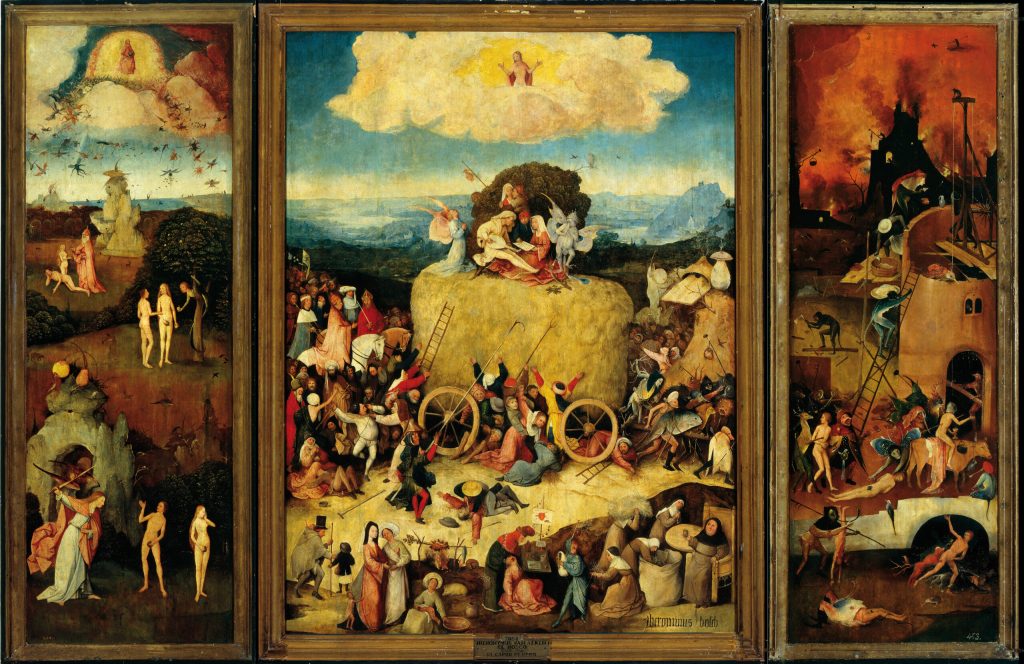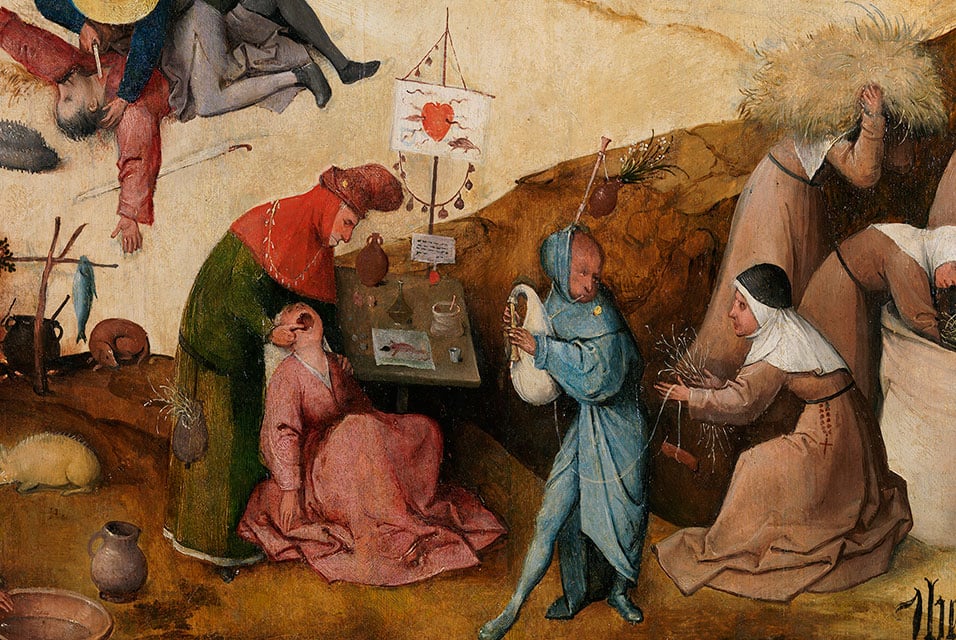Art World
Bosch Triptych of Sinful Everyday Life Returns to the Netherlands After 450 Years


Sarah Cascone

Hieronymus Bosch‘s The Haywain Triptych, an important Dutch masterpiece, is returning to the Netherlands this fall for two major exhibitions marking the first time the work sets foot on Dutch soil in 450 years.
Spain’s King Philip II, an avid Bosch collector, acquired the painting for his private collection in 1570, and it has remained in Spain ever since. It currently belongs to the Museo Nacional del Prado in Madrid, founded in the nineteenth century to showcase works of art belonging to the crown.
At Museum Boijmans Van Beuningen in Rotterdam, The Haywain will be among the genre paintings providing a glimpse of everyday life in the 16th century. Next year, the Het Noordbrabants Museum in s-Hertogenbosch, Bosch’s birthplace, will present 20 paintings and 19 drawings by the artist, including the triptych, in what is being billed as the largest retrospective ever dedicated to him.
The painting’s over six-month-long visit to its home country will take place just in time for the 500th anniversary of Bosch’s death in 1516.

Hieronymus Bosch, The Haywain Triptych, detail. Courtesy of the Museo Nacional del Prado, Madrid.
In a statement, the Museum Boijmans called The Haywain “one of the first paintings in art history to depict everyday scenes,” with a large number of figures in the central panel engaged in sinful activities. Lovers hidden in foliage embrace, men attack each other, and monks over-indulge in alcohol. Bosch’s signature beastly figures lend the work a sinister, nightmarish quality.
The left panel shows the origins of sin, with the fall of the angels and of Adam and Eve, while the final right-hand panel depicts the ultimate reward of a sinful existence: an afterlife spent in the fires of hell.
While The Haywain is only being lent to the Netherlands, four paintings, two of which are by Bosch (including his beloved The Garden of Earthly Delights), may soon leave the Prado for good. When the Spanish Royal Collection opens its new museum next year, it hopes reclaim a quartet of Bosch, Rogier van der Wyden, and Tintoretto paintings that have called the Prado home since the tumult of the Spanish Civil War.
The crown’s heritage agency, the Patrimonio Nacional, is looking to recall a number of other loans in order to fill the walls of the new Royal Collection museum.
“Uncovering Everyday Life: From Bosch to Bruegel” will be on view at the Museum Boijmans Van Beuningen, Rotterdam, October 10, 2015–January 17, 2016.
“Jheronimus Bosch: Visions of Genius” will be on view at the the Het Noordbrabants Museum, Hertogenbosch, February 13–May 8, 2016.